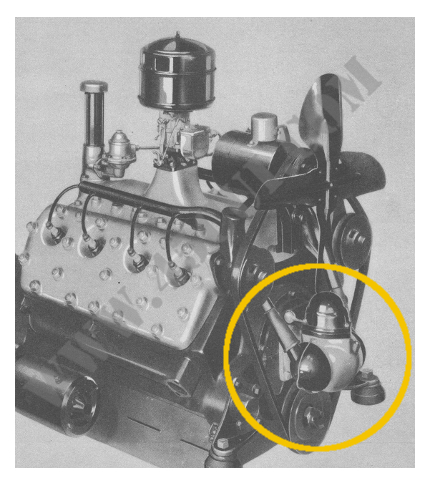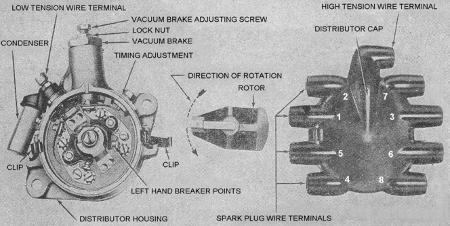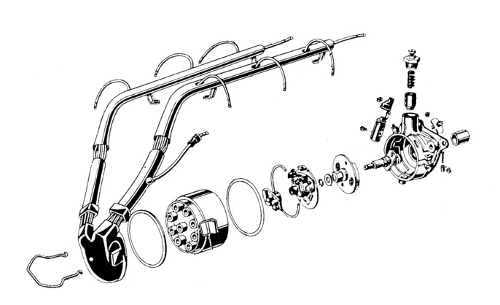21 comments
Comment from: John Tary Visitor
Comment from: zapp Member

Just an “A” on the heads or two letter followed by A? Any number on the top of the bell housing? Some pictures may help.
Comment from: dennis Visitor
I have just bought a 1948 flat bed truck flat head motor. The heads have number c-7RAA on them and I can not find info on this number, Can any one help me?
Comment from: Tom Visitor
The flat head Ford and Mercury engines were in Ford, Mercury and (Meteor and Monarch Canada only models) in the 1954 model years. The Y-block engine did not arrive until 1955.
The long stroke Mercury engines were in the Customline and Crestline models of 1954 Fords in Canada.
Comment from: Johnny Pool Visitor
Hi ,I have a 24 bolt flathead with numbers
1B45176*
Could you ID for me please ,ie year and HP
Regards johnny
Comment from: Brian Falkner Visitor
Dennis, C7RA heads are Canadian original equip on their 48 F1’s & are & 6.7-1 or 6.8-1 ratio from memory. They made them in aluminium & cast iron with alloy being slightly higher comp.
Brian D F. New Zealand
Comment from: LOUIS E SIVLEY Visitor
WHAT MAKE OF MERCURY EAC HEADS MOTOR NO 2AYC ALSO YEAR
Comment from: hector Member
1953 monarch flat head # on head 8rt6049d & another # 310d can you id this engine for me any help would be appriaced
Comment from: Alisa Dove Visitor
Need help identifying a flathead motor. All I can see is what looks like the stamp 68-6049B. Any help would be appreciated.
Comment from: Bruce wilson Visitor
Trying to identify a couple of flatheads I have. All 3 have no heads ,no distributor, but a set up to take a 3 bolt distributor,,,,,,looking to see what year they are? Also they have ,,,59 ,,,,stamped on the bell housing top
Comment from: Parrish Galliher Visitor
My 24 stud V8 only has the number “20” on top of the cast bell housing, no letters. Does anyone know what year it was built?
Comment from: Parrish Galliher Visitor
My 24 stud V8 only has the number “20” on top of the cast bell housing, no letters. Does anyone know what year it was built and what the HP is?
Comment from: William Visitor
In the first comment “John” said letter “A”
Have been looking for info on the same engine myself.
Engine has a “Crab Claw” distributor, Dark Green color.
Comment from: mario Visitor
can anyone help identify this v8 flat head engine. L11733 and under this number 59
Comment from: Mark Karol-Chik Visitor
John Tary-
The heads with the A on them are 1942 Mercury.
Comment from: Jukka Virta Visitor
Hello, I have a 24 stud flathead and there is - F23 3 - X5 on the integral bellhousing upper edge. Raised intake flange. Heads are with casting numbers either CAE or GAE - RH and LH. with the Ford USA below. Center water outlets. Crab style front distributor and truck water pumps. What year, size or use it is from?
Comment from: Bill Hardy Visitor
I have a 24 stud flathead I’m trying to identify. On the right top of the bell housing are g2123. The heads are cast EA B J 32 and H 72.
Comment from: whoody Member
Hi all, i have a 21 stud engine with no numbers on the rear bellhousing, i no its between 32-36. Only have the engine number * C18ZF5589 * any help would be great, thanks Steve
Comment from: gary3_aero Member
I’m looking at purchasing a Flathead, but a bit confused because the different components don’t seem to match up… 59L on the block, 41T on the covers - so these two together seem to indicate it originally came from a truck. But the kicker is the distributor is a Diver Helmet style - which doesn’t seem to match the newer block and covers. Is it possible to actually make that distributor work for rest of the setup?
Comment from: ray hart Visitor
where is the ID numbers located on a 239 flathead engine
Comment from: nick ruoti Visitor
the ford flathead identification was very helpful. thank you very much




I have a 1935 Ford pickup.The truck has a later 24 stud engine with crab style distributor.The heads are marked with the letter A.Can anyone I.D. them for me.Thank you John.